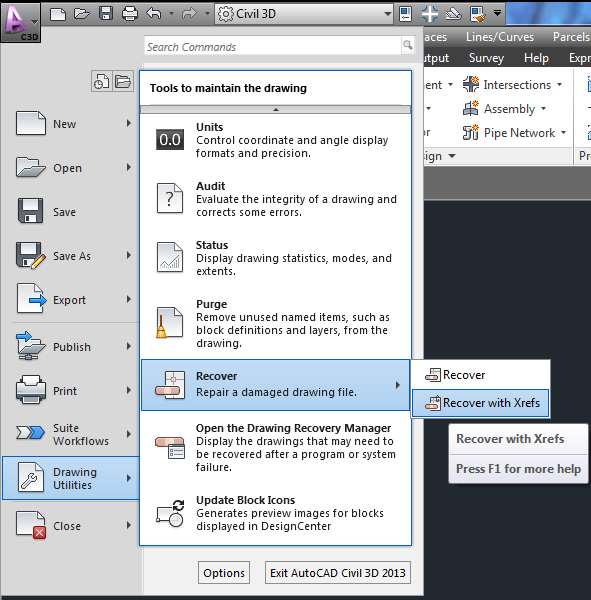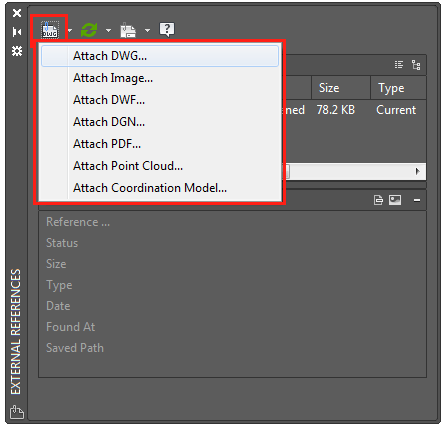

During my travels, I've delivered more hours of training, support, demos, and implementations that can remember. I spent the first decade of my career working for an Autodesk reseller as an Application Specialist. Hello! My name is Mike Thomas and I have a lot of experience with Autodesk products, primarily in the Manufacturing realm. When you bind the XREF using the Bind option the layers are maintained with AutoCAD prefixing the layers with the number and the drawing name. This means that objects may change in appearance as if the layer already exists the layers (and their objects) will take on the properties of the existing layers. When you bind the XREF using the Insert option the layers are merged into the host drawing. When you bind an XREF, converting it into a block definition opposed to an external reference, you are presented with two options: Bind and Insert. This maintains the XREF’s layers as separate entities even if the same name exists in the host drawing. When a drawing is attached as an XREF its layers appear in the Layer Manager prefixed by the drawing name and a pipe (|). This is a good place to use Layer Delete or Layer Merge when you cannot locate the object using the layer. Meaning that even though the block is not inserted into the drawing it is still defined as a block definition, consuming the layer. When you explode a block the objects will remain on the layers they were created on, they do not take on the layer of the block.Ī common reason why layers cannot be purged is that an object resides on the layer within a block definition. Making sense? For a different take on the differences between Layer 0, ByLayer, and ByBlock take a look at the post Edwin Prakoso did on CAD Notes a couple years back Exploding, Purging, and Merging If the object is on any layer other than Layer 0 it will use the properties of the layer it resides on. If the object properties are set to ByBlock it will take on the layer properties but will be effected by changes to the base layer (i.e. If the object in the block is on Layer 0 it will use the properties of the layer the block resides. The centerline we’ll place on the centerline layer so that it appears and behaves as all other geometry on the centerline layer We want the bolt to take on the properties of the layer it is placed on EXCEPT for the centerline. Take for example a block depicting the side view of a hex head bolt. If the geometry contained within the block resides on any layer other than layer 0 it will maintain those layer properties opposed to assuming the properties of the layer the block resides Therefore if the block is on a red layer with a hidden line type all objects within the block on layer 0 will appear red with a hidden line type. If the geometry contained within the block resides on layer 0 this geometry will take on the properties of the layer the block is placed on. Why is Layer 0 in every drawing? Why can Layer 0 not be deleted or purged? It all has to do with blocks. Sometimes the block maintains its own colors and linetypes regardless of the layer it is placed on. Blocks are no different.When you insert a block it is placed onto a layer and the block will take on the properties of the layer it is placed on…. Therefor if the color property of the object is set to BYLAYER it will appear as the same color as the layer the object resides on.

The property option BYLAYER means that the object will honor the properties of the layer it resides on. I mage courteous of Flickr, Posted by Second Life Resident Torley Linden Blocksīlocks within AutoCAD serve many purposes but mostly to provide a convenient method to reuse content while maintaining consistency from drawing to drawing. Have I left the best for last? No, I think each post holds its own when it comes to managing layers and using them to their fullest potential within AutoCAD. In this final post lets look at using Layers within Blocks and Xrefs as each has it own special place in the Layer world
#XREF AUTOCAD PDF#
Or use another tool to export the PDF to a raster image that you can insert into AutoCAD with INSERTOBJ command.Here we are at the end of our “ Deep Dive” look at AutoCAD Layers. You can capture snapshot images of them and attach pictures of the PDFs if you want to go that route: use the snapshot tool in your PDF Reader, then CTRL+V in AutoCAD. In the Bind Xrefs dialog box, select one of the following options: ….In the External References palette, select the reference name that you want to bind.Click Insert tab Reference panel Dialog box launcher.


 0 kommentar(er)
0 kommentar(er)
